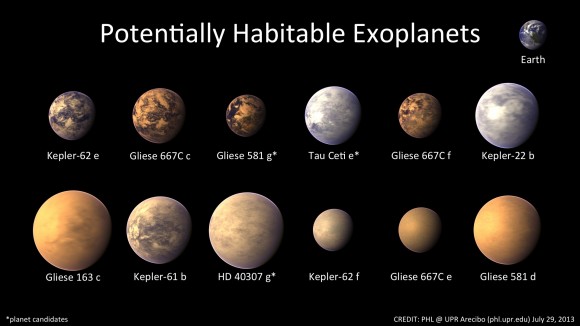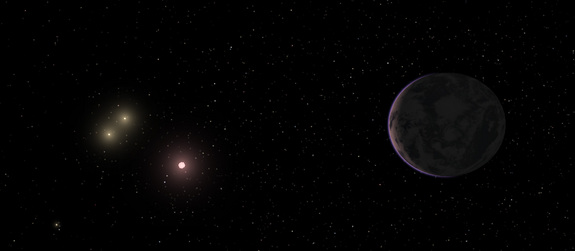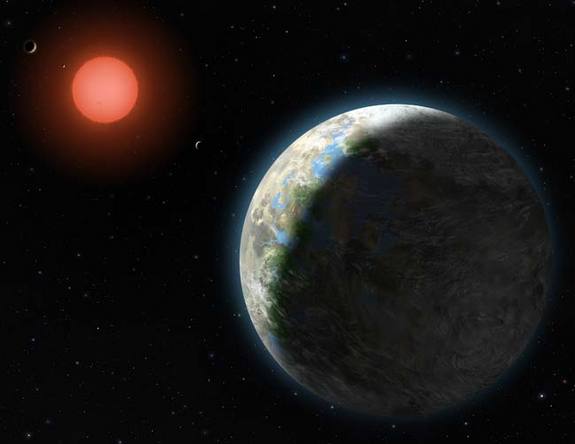Do you believe that life exists anywhere else besides Earth? Considering how vast the universe is, the idea that alien life exists is not a far-fetched one.

Astronomers estimate that there are about 100 billion stars in the Milky Way Galaxy and about 100 billion other galaxies in just the observable universe with each having billions of stars. These stars have planets and other objects orbiting them.
Although the only known intelligent civilization in the universe is Earth, the possibility of simple or complex life being out there is very high. There is no direct evidence of life ever found anywhere else but the reasons to believe that there is life out there are compelling.
A new study shows that The Milky Way galaxy alone could have around 60 billion habitable planets orbiting faint red dwarf stars. Only a few potentially habitable planets have been detected so far.
According to Habitable Exoplanets Catalogue, Here are star systems that have potentially habitable exoplanets beyond the solar system.
Kepler-62 System
Located 1200 light years away in the constellation Lyra, Kepler-62 is a star that is cooler and smaller than our sun.
The star has five planets in its orbit. The farthest two planets are the smallest planets known to orbit in a star’s habitable zone. Models show that these two could be water worlds, covered with oceans just like earth.
Kepler-62e orbits within the star’s habitable zone. It was discovered by NASA’s Kepler Space Telescope and is the second outermost planet in the system.
Why is there a high possibility that water and life exists on Kepler-62e? It is most likely a terrestrial planet located in the inner part of the host star’s habitable zone. Given it size, age and stellar flux, scientists believe it could be a rocky world with substantial amount of water on its surface. Based on scientific calculations, planets of its size would have an ocean cover.
The second potentially habitable planet in Kepler-62 system a star that is Kepler-62f. Since it is the farthest planet from its star, it is covered by ice. The exoplanet is just 40% larger than Earth and orbits in the habitable zone of its star.
Its size, age, and stellar flux show that it could be a rocky world possibly covered by an ocean and life could thrive here.
Gliese 667 System
Gliese 667 is a triple star system discovered by a team of astronomers at the European Southern Observatory (ESO). This system is home to seven planets.
Three of the planets are in the habitable zone of the smallest star in the system, Gliese 667C which is 22 light years from us. This star has low luminosity and mass than our sun.
The size, stellar flux and 85% Earth similarity index makes Gliese 667Cc a likely candidate for extraterrestrial life. The exoplanet was discovered in 2011 orbiting its star Gliese 667C within the inner edge of its habitable zone where liquid water could be present.
The planet is 4.5 times larger than Earth and there is a high chance that it is a rocky world. It receives 90% stellar flux from its star that the Earth receives from the sun but it retains more making it warmer than Earth.
Discovered in 2013, Gliese 667Cf occupies the middle part of Gliese 667C’s habitable zone. Astronomers believe there is a high possibility of finding life here.
While it receives just 60% of the starlight received by Earth, it receives higher infrared radiation and absorbs more starlight than Earth making it warmer such that it could support life.
Gliese 667Ce orbits its star Gliese 667C within the habitable zone. It is the third potentially habitable planet in this alien star system.
Its stellar flux is just a third that of Earth but if it has a sufficient greenhouse effect, water could exist in liquid form making it a potentially habitable exoplanet.

Gliese 581 System
There are 4-5 planets in Gliese 581 system.

- Gliese 581 System The Large Planet is Gliese 581g Image Credit
Gliese 581g orbits in the middle of the star’s habitable zone. It is 2-3 times as massive as Earth.
Although scientists have disagreed on its existence since it was discovered in 2010, it was ranked best candidate to host life beyond our solar system by Arecibo’s PHL ranking of potentially habitable alien worlds.
If it exists, scientists believe it could be a rocky world that is two to three times as massive as Earth with conditions that could encourage life to thrive.
Gliese 581d is a world where life is likely to exist. It receives less stellar flux from its star than the Earth receives from the sun.
However, astronomers believe it could have a stronger greenhouse effect allowing it to absorb more heat and have a temperature where liquid water could exist. It may even have a, Earth-like water cycle that supports life.
Discovered in 2007, Gliese 581c has conditions that could allow extraterrestrial life to thrive.
It orbits its star in the circumstellar habitable zone where water could remain in liquid form. It is slightly larger than Earth with a radius 1.5 that of Earth and could have a rocky composition or oceans on its surface.
The average temperature on Gliese 581c ranges between 0 and 40 degrees Celsius so water could remain in liquid form and life could exist.
Kepler-22 System
Kepler-22 is 600 light years away. It is a star very much similar to our sun. A planet orbiting it was first spotted in 2009 and its existence was confirmed in 2011. The planet is Kepler-22b.
There is a strong possibility that life exists in this alien world that is Kepler-22b. Its orbit is within the habitable zone of a sun-like star and liquid water could exist on its surface.
As for the kind of life we could expect to find here, this exoplanet could have continental features like those on Earth allowing complex human-like life to thrive. It could also be a water world with an ocean supporting complex water life forms such as dolphins.

- Artist’s Concept of Kepler 22b Image Source
Gliese 163 System
The star Gliese 163 is 50 light years from us. It is dimmer than our sun. Two alien planets have been discovered orbiting this star. One of them, Gliese 163C, is believed to be potentially habitable with the ability to support microbial life. Its orbit lies within the inner edge of its star’s habitable zone.
With a seven times higher mass than that of Earth, it could be a dwarf gas giant or a giant rocky planet. Since it is closer to its star, it receives 40% more stellar radiation from its star than Earth making its surface temperature 60 degrees Celsius.
It has structures and compositions that could support habitability but there are some uninhabitable characteristics too. For instance, it may be too hot to support complex life. We are not so sure abut its habitability.
At the time of its discovery in 2012, it was ranked fifth on the Planetary Habitability Laboratory (PHL) catalogue.
